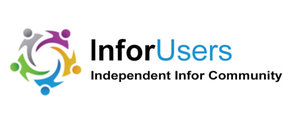Resources to Monitor the Elderly are Expensive and Serial
If you have an elderly relative or friend, you are likely concerned about how well their health is being monitored to ensure the highest quality of life. In some cases, a care provider service may be hired to look in on the person several times a week and to assist with cleaning, meals, and healthcare activities (e.g., medication refills and attending scheduled physician visits).
The challenge with elder care home services is that, in most cases, the elderly person is not being monitored 24/7. Falls, senility events, and healthcare challenges (e.g., taking the wrong dose of medication, forgetting to take a medication, or catching an infection) are events that can happen at any time for the elderly.
The National Institute on Aging provides a list of categories caregivers can use to evaluate how well or long a person could “age at home.” These categories are based on the use of human resources to support the elderly. In some areas of the US, finding resources may be challenging for the families of the elderly, especially in rural areas. And even if you find human resources to help your elderly family and friends, they may not like or accept the people provided by homecare services to assist them.
New digital voice and AI solutions are emerging that may help to reduce the need for human resources to support the elderly while also providing 24-hour monitoring.
Voice and AI Solutions Will Improve At-Home Elder Care
Previous blogs on the use of home assistant devices (Smart Speakers Becoming Healthcare Monitors) and voice biomarker technologies (Voice Biomarkers Become a Key Disease Detection Solution) provide examples of how voice and AI solutions are being combined to support at-home care. The US has a significant population of “boomers” and Generation X citizens who will require additional healthcare services as they continue to age. The US will need to continue to pursue at-home digital health services to reduce the healthcare cost and to improve the quality of care our citizens deserve.
An example of a solution focused on elder care using digital voice and AI technologies is Sensi.AI. This solution interfaces to smartphones and tablets that the elderly people have, or the vendor will provide a digital device that is used to capture voice interactions in the home. All captured voice streams are confidential and HIPAA compliant with their use. The AI models used to detect healthcare challenges are trained with nursing protocols. The Sensi.AI system is “trained to pick up on instances of care resistance, physical or mental distress or calls for help, as well as on difficult patient-caregiver situations and even negligence or abuse.” Identified healthcare challenges can help determine whether human resources are needed to help care for the patient and at what times of the day or night. This approach reduces the cost of using homecare personnel services while making those services more efficient. It also provides a level of comfort for the families of the elderly.
The Justification: Digital Technologies Improve Elder Homecare and Reduce Cost
As healthcare reimbursement and management moves to value-based care, healthcare providers must extend their services to support increased levels of homecare, especially for the elderly that wish to age at home. Evolving digital technologies that integrate voice recognition with AI analytics to evaluate a person’s health status at home are demonstrating the value these solutions will have on improving quality of care, patient satisfaction, and healthcare delivery cost reductions.
The COVID-19 pandemic became a catalyst for creating digital technology solutions that can monitor and guide patient health services. As people age, they will naturally consider what they will need to remain in their homes and their communities.
The Players: Digital Solutions Focused on Homecare Patient Monitoring and Interactions
Representative homecare digital solutions that support monitoring and/or patient guidance (chatbots) to enable improved elderly care are the following:
- Sensi.AI – designed to deliver accurate, qualitative, and efficient care with Sensi.AI’s in-home virtual care agent.
- care.coach – capabilities ranging from telemedicine to a 24/7 engaging avatar companion that can be customized to meet the differing needs of individuals
- CareAngel – focused on complete episodes of care for high-risk patients
Success Factors
- Provider organizations should begin to evaluate/prototype at-home digital technologies that monitor patient status and provide patient interactions with clinicians.
- At-home care solutions should be digital/smart device agnostic to provide implementation and adoption flexibility and minimize the total cost of ownership.
- All data collected from at-home care solutions should be normalized and added to the enterprise data warehouse to support clinical and AI analytics.
Summary
At-home care to support high-risk patients and the elderly will be supported by emerging digital voice and AI solutions that cannot only monitor patients but suggest or drive healthcare services that will improve patient safety, quality care, and outcomes. Many families have elderly relatives and are concerned about knowing whether their relatives are safe and are being monitored for falls, being monitored for medication compliance, addressing medical questions, scheduling medical services, or receiving regular input on their medical status.
Home assistant devices from Google, Amazon, and Apple are moving to provide these services, but many citizens cannot afford these types of services or don’t have access to broadband communications. Companies delivering at-home services via cellular bands (e.g., 3G, 4G, and 5G) will be available to a higher number of citizens but will provide competitive monitoring and healthcare guidance services. The 5G cellular mode may support home assistant devices in the near future.
Soon, we may be able to provide cost-effective at-home care to elderly patients so that families can sleep better at night.
Photo credit: Africa Studio, Adobe Stock


